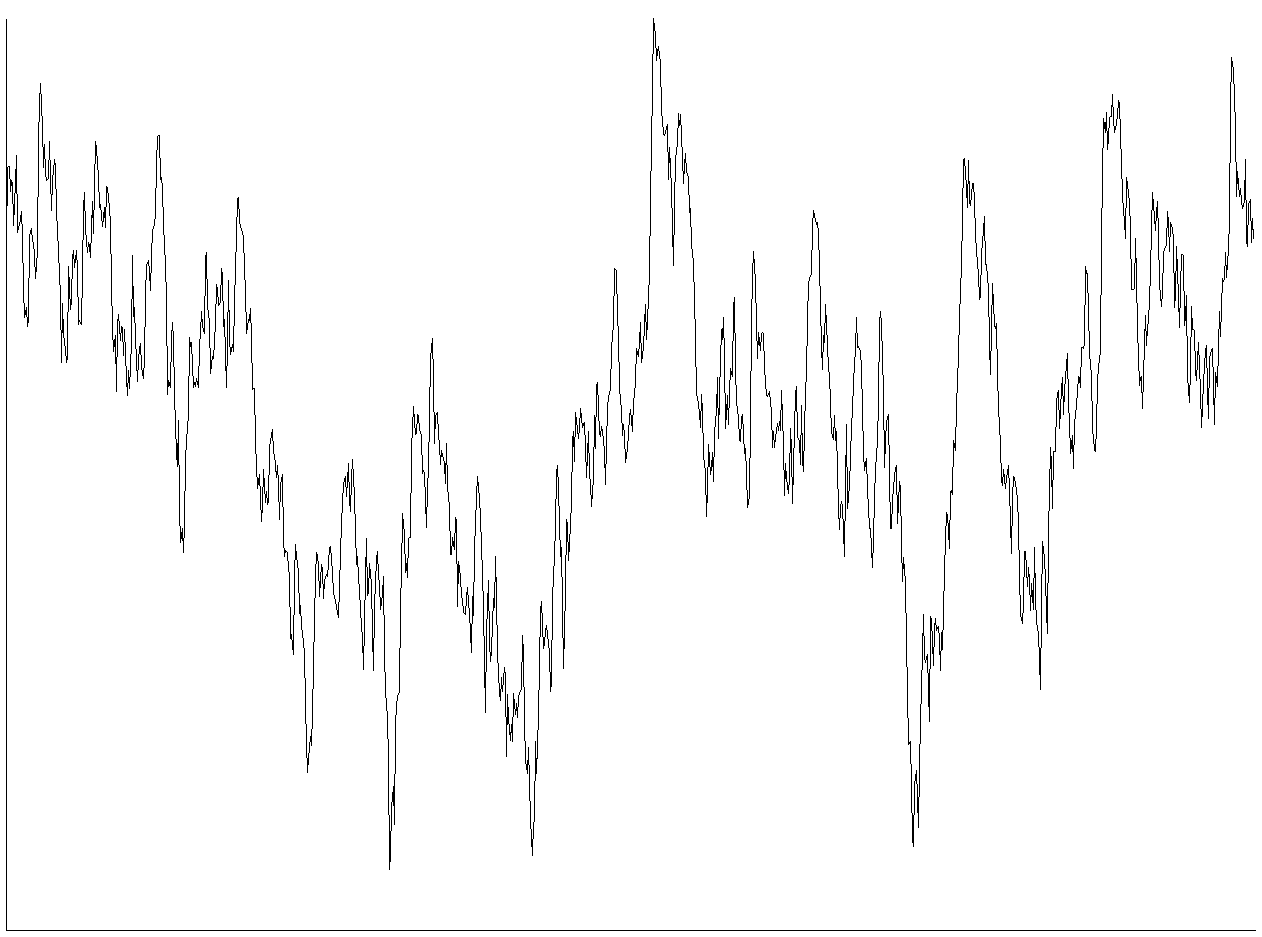|
Noise
Noise is sound, chiefly unwanted, unintentional, or harmful sound considered unpleasant, loud, or disruptive to mental or hearing faculties. From a physics standpoint, there is no distinction between noise and desired sound, as both are vibrations through a medium, such as air or water. The difference arises when the brain receives and perceives a sound. Acoustic noise is any sound in the acoustic domain, either deliberate (e.g., music or speech) or unintended. In contrast, noise in electronics may not be audible to the human ear and may require instruments for detection. In audio engineering, noise can refer to the unwanted residual electronic noise signal that gives rise to acoustic noise heard as a hiss. This signal noise is commonly measured using A-weighting or ITU-R 468 weighting. In experimental sciences, noise can refer to any random fluctuations of data that hinders perception of a signal. Measurement Sound is measured based on the amplitude and frequency of ... [...More Info...] [...Related Items...] OR: [Wikipedia] [Google] [Baidu] |
Noise Pollution
Noise pollution, or sound pollution, is the propagation of noise or sound with potential harmful effects on humans and animals. The source of outdoor noise worldwide is mainly caused by machines, transport and propagation systems.Senate Public Works Committee. ''Noise Pollution and Abatement Act of 1972''. S. Rep. No. 1160, 92nd Congress. 2nd session Poor urban planning may give rise to noise disintegration or pollution, side-by-side industrial, and residential buildings can result in noise pollution in the residential areas. Some of the main sources of noise in residential areas include loud music, transportation (traffic, rail, airplanes, etc.), lawn care maintenance, construction, electrical generators, wind turbines, explosions, and people. Documented problems associated with noise in urban environments go back as far as ancient Rome. Research suggests that noise pollution in the United States is the highest in low-income and racial minority neighborhoods, and noise pollut ... [...More Info...] [...Related Items...] OR: [Wikipedia] [Google] [Baidu] |
Noise (electronics)
In electronics, noise is an unwanted disturbance in an electrical signal. Noise generated by electronic devices varies greatly as it is produced by several different effects. In particular, noise is inherent in physics and central to thermodynamics. Any conductor with electrical resistance will generate thermal noise inherently. The final elimination of thermal noise in electronics can only be achieved cryogenically, and even then quantum noise would remain inherent. Electronic noise is a common component of noise in signal processing. In communication systems, noise is an error or undesired random disturbance of a useful information signal in a communication channel. The noise is a summation of unwanted or disturbing energy from natural and sometimes man-made sources. Noise is, however, typically distinguished from interference, for example in the signal-to-noise ratio (SNR), signal-to-interference ratio (SIR) and signal-to-noise plus interference ratio (SNIR) measu ... [...More Info...] [...Related Items...] OR: [Wikipedia] [Google] [Baidu] |
Noise Research Program On Hangar Apron - GPN-2000-001457
Noise is sound, chiefly unwanted, unintentional, or harmful sound considered unpleasant, loud, or disruptive to mental or hearing faculties. From a physics standpoint, there is no distinction between noise and desired sound, as both are vibrations through a medium, such as air or water. The difference arises when the brain receives and perceives a sound. Acoustic noise is any sound in the acoustic domain, either deliberate (e.g., music or speech) or unintended. In contrast, Noise (electronics), noise in electronics may not be audible to the human ear and may require instruments for detection. In audio engineering, noise can refer to the unwanted residual electronic noise signal that gives rise to acoustic noise heard as a Hiss (electromagnetic), hiss. This signal noise is commonly measured using A-weighting or ITU-R 468 weighting. In experimental sciences, noise can refer to any random fluctuations of data that hinders perception of a signal. Measurement Sound is measured bas ... [...More Info...] [...Related Items...] OR: [Wikipedia] [Google] [Baidu] |
Environmental Noise
Environmental noise is an accumulation of noise pollution that occurs outside. This noise can be caused by transport, industrial, and Sport, recreational activities. Noise is frequently described as 'unwanted sound'. Within this context, environmental noise is generally present in some form in all areas of human, animal, or environmental activity. The effects in humans of exposure to environmental noise may vary from emotional to physiological and psychological. Noise at low levels is not necessarily harmful. Environmental noise can also convey a sense of liveliness in an area, which can be desirable. The adverse effects of noise exposure (i.e. noise pollution) could include: interference with speech or other 'desired' sounds, annoyance, sleep disturbance, anxiety, hearing damage and stress-related cardiovascular health problems. As a result, environmental noise is studied, regulated, and monitored by many governments and institutions around the world. This creates a number of ... [...More Info...] [...Related Items...] OR: [Wikipedia] [Google] [Baidu] |
Sound Level Meter
A sound level meter (also called sound pressure level meter (SPL)) is used for acoustics, acoustic measurements. It is commonly a hand-held instrument with a microphone. The best type of microphone for sound level meters is the condenser microphone, which combines precision with stability and reliability. The Diaphragm (acoustics), diaphragm of the microphone responds to changes in air pressure caused by sound waves. That is why the instrument is sometimes referred to as a sound pressure level meter (SPL). This movement of the diaphragm, i.e. the sound pressure (unit Pascal (unit), pascal, Pa), is converted into an electrical signal (unit volt, volt, V). While describing sound in terms of sound pressure, a logarithmic conversion is usually applied and the sound pressure ''level'' is stated instead, in decibels (dB), with 0 dB SPL equal to 20 micropascals. A microphone is distinguishable by the voltage value produced when a known, constant root mean square sound pressure is ... [...More Info...] [...Related Items...] OR: [Wikipedia] [Google] [Baidu] |
Noise Barrier
A noise barrier (also called a soundwall, noise wall, sound berm, sound barrier, or acoustical barrier) is an exterior structure designed to protect inhabitants of sensitive land use areas from noise pollution. Noise barriers are the most effective method of mitigating roadway noise, roadway, railway, and industrial noise sources – other than cessation of the source activity or use of source controls. In the case of surface transportation noise, Noise mitigation#Roadways, other methods of reducing the source noise intensity include encouraging the use of Hybrid vehicles, hybrid and electric vehicles, improving Automotive aerodynamics, automobile aerodynamics and tire design, and choosing low-noise Pavement (material), paving material. Extensive use of noise barriers began in the United States after noise regulations were introduced in the early 1970s. History Noise barriers have been built in the United States since the mid-twentieth century, when vehicular traffic burgeoned. ... [...More Info...] [...Related Items...] OR: [Wikipedia] [Google] [Baidu] |
A-weighting
A-weighting is a form of frequency weighting and the most commonly used of a family of curves defined in the International standard IEC 61672:2003 and various national standards relating to the measurement of sound pressure level. A-weighting is applied to instrument-measured sound levels in an effort to account for the relative loudness perceived by the human ear, as the ear is less sensitive to low audio frequencies. It is employed by arithmetically adding a table of values, listed by octave or third-octave bands, to the measured sound pressure levels in dB. The resulting octave band measurements are usually added (logarithmic method) to provide a single A-weighted value describing the sound; the units are written as dB(A). Other weighting sets of values – B, C, D and now Z – are discussed below. The curves were originally defined for use at different average sound levels, but A-weighting, though originally intended only for the measurement of low-level sounds (aro ... [...More Info...] [...Related Items...] OR: [Wikipedia] [Google] [Baidu] |
Decibel
The decibel (symbol: dB) is a relative unit of measurement equal to one tenth of a bel (B). It expresses the ratio of two values of a Power, root-power, and field quantities, power or root-power quantity on a logarithmic scale. Two signals whose level (logarithmic quantity), levels differ by one decibel have a power ratio of 101/10 (approximately ) or root-power ratio of 101/20 (approximately ). The strict original usage above only expresses a relative change. However, the word decibel has since also been used for expressing an Absolute scale, absolute value that is relative to some fixed reference value, in which case the dB symbol is often suffixed with letter codes that indicate the reference value. For example, for the reference value of 1 volt, a common suffix is "#Voltage, V" (e.g., "20 dBV"). As it originated from a need to express power ratios, two principal types of scaling of the decibel are used to provide consistency depending on whether the scaling refer ... [...More Info...] [...Related Items...] OR: [Wikipedia] [Google] [Baidu] |
Noise Dosimeter
A noise dosimeter (American English) or noise dosemeter (British English) is a specialized sound level meter intended specifically to measure the noise exposure of a person integrated over a period of time. It is often used to comply with Health and Safety regulations such as the Occupational Safety and Health (OSHA) 29 CFR 1910.95 Occupational Noise Exposure Standard or EU Directive 2003/10/EC. Noise Measurement Noise dosimeters measure and store sound pressure levels (SPL) and, by integrating these measurements over time, provide a cumulative noise-exposure reading for a given period of time, such as an 8-hour workday. Dosimeters can function as personal or area noise monitors. In occupational settings, personal noise dosimeters are often worn on the body of a worker with the microphone mounted on the middle-top of the person's most exposed shoulder. Area monitoring can be used to estimate noise exposure when the noise levels are relatively constant and employees are not mo ... [...More Info...] [...Related Items...] OR: [Wikipedia] [Google] [Baidu] |
ITU-R 468 Weighting
ITU-R 468 (originally defined in CCIR recommendation 468-4, therefore formerly also known as CCIR weighting; sometimes referred to as CCIR-1k) is a standard relating to noise measurement, widely used when measuring noise in audio systems. The standard, now referred to as ITU-R BS.468-4, defines a weighting filter curve, together with a quasi-peak rectifier having special characteristics as defined by specified tone-burst tests. It is currently maintained by the International Telecommunication Union who took it over from the CCIR. It is used especially in the UK, Europe, and former countries of the British Empire such as Australia and South Africa. It is less well known in the USA where A-weighting has always been used. M-weighting is a closely related filter, an offset version of the same curve, without the quasi-peak detector. Explanation The A-weighting curve was based on the 40 phon equal-loudness contour derived initially by Fletcher and Munson (1933). Originally inc ... [...More Info...] [...Related Items...] OR: [Wikipedia] [Google] [Baidu] |
Ambient Noise Level
In atmospheric sounding and noise pollution, ambient noise level (sometimes called background noise level, reference sound level, or room noise level) is the background sound pressure level at a given location, normally specified as a reference level to study a new intrusive sound source. Ambient sound levels are often measured in order to map sound conditions over a spatial regime to understand their variation with locale. In this case the product of the investigation is a sound level contour map. Alternatively ambient noise levels may be measured to provide a reference point for analyzing an intrusive sound to a given environment. For example, sometimes aircraft noise is studied by measuring ambient sound without presence of any overflights, and then studying the noise addition by measurement or computer simulation of overflight events. Or roadway noise is measured as ambient sound, prior to introducing a hypothetical noise barrier intended to reduce that ambient nois ... [...More Info...] [...Related Items...] OR: [Wikipedia] [Google] [Baidu] |







